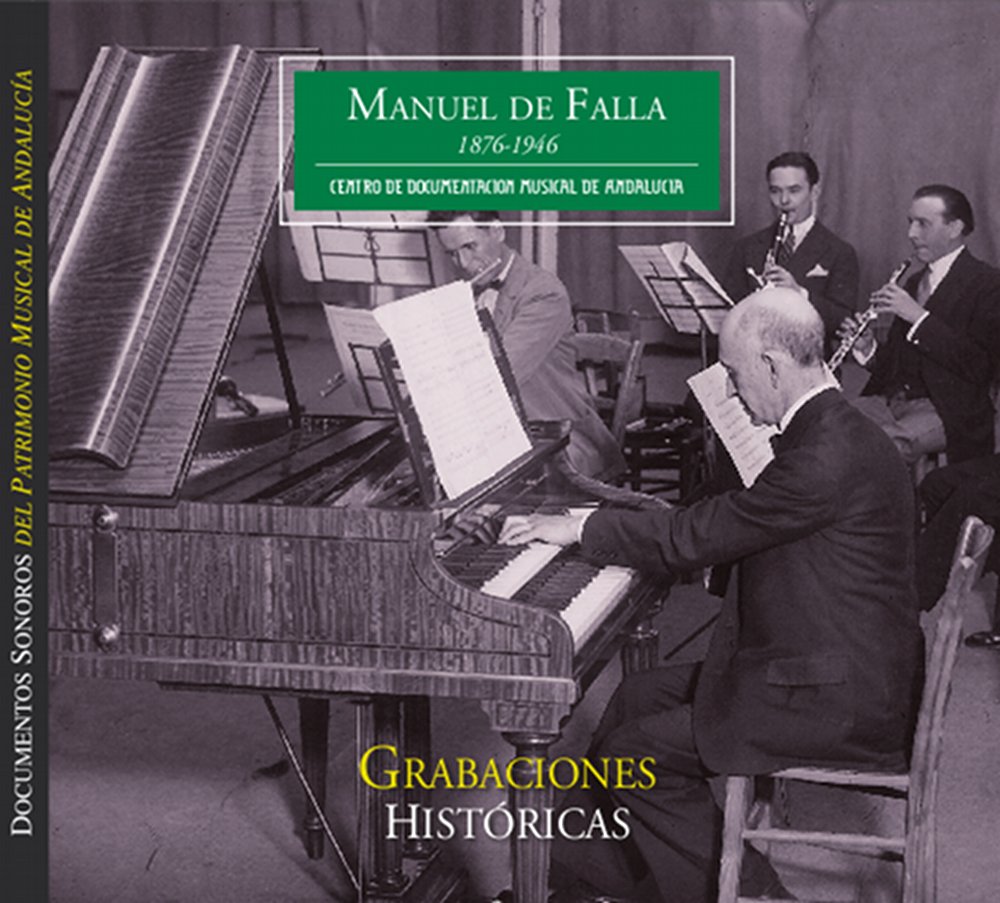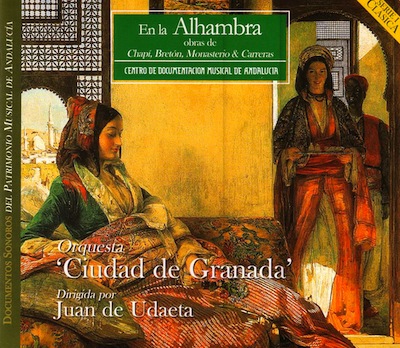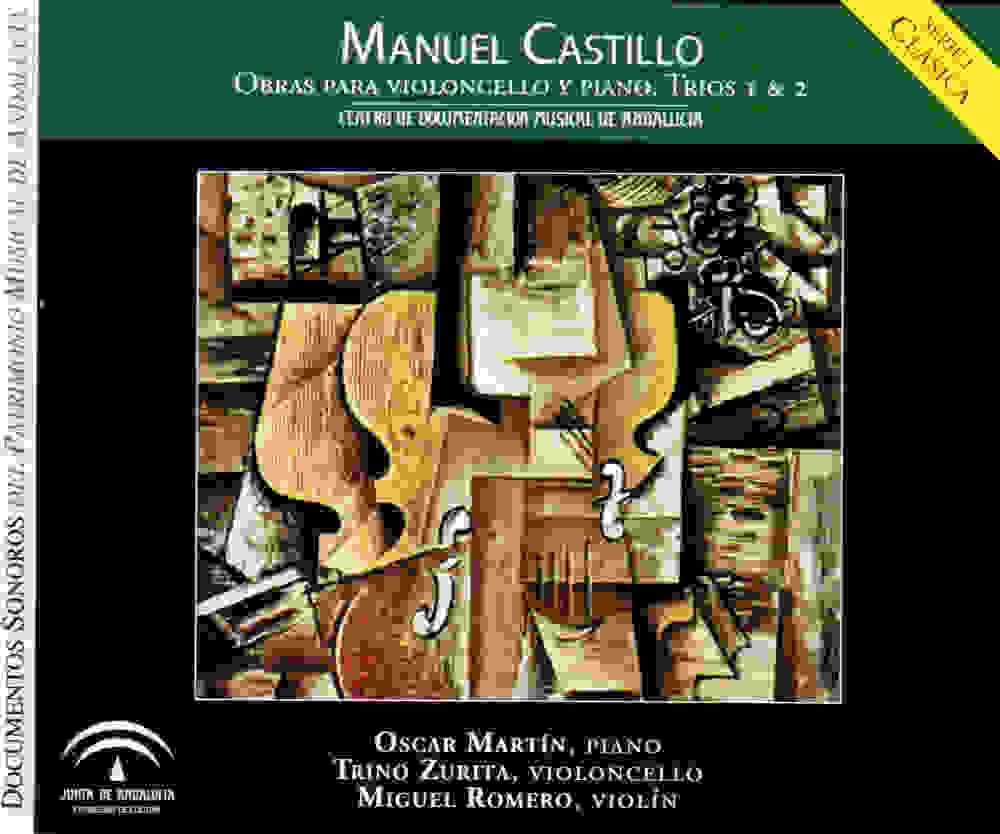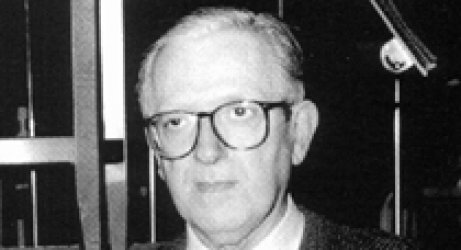En la Alhambra
Alhambrismo MusicalOrquesta Ciudad de Granada
MUSICAL `ALHAMBRISMO' IN NINETEENTH-CENTURY SPAIN More than a fully-developed style entity, Alhambrismo in nineteenth-century music was a fashion, a type of "sound" which can be linked with a tendency towards the picturesque and the recreation of the mood of Spanish music of the first half of the nineteenth century. The Picturesque had opened its doors on two trends in European orchestral music: northern idealism asseen in Fingal's cave by Mendelssohn, and the Orientalism of The Desert by David, which was followed later in works by Massenet and Saint-Saëns. Historically, Spain was co...+ info
Obras para Violoncello y Piano. TrÃos 1 & 2
Manuel CastilloOscar MartÃn, Piano, Trino Zurita, Violoncello, Miguel Romero, ViolÃn
Manuel castillo Navarro-Aguilera was born in Sevilla in 1930. He displayed musical talent at an early age both as a pianist and as a composer. He studied in Sevilla with Norberto Almandoz (Chapel Master at the Cathedral) and in Madrid with A. Lucas Moreno (piano) and Conrado del Campo (composition). He was awarded the Joaquin Turina Prize when he was only 19, and at 21 he debuted as a pianist with the Bética Chamber Orchestra. He continued his studies in Paris with Lazare Levy (piano) and Nadia Boulanger (composition) and, after his return to Spain, he got a professorship at the Seville...+ info
Nuevo Disco: OBRAS PARA VIOLONCELLO Y PIANO. TRÃOS 1 Y 2. MANUEL CASTILLO
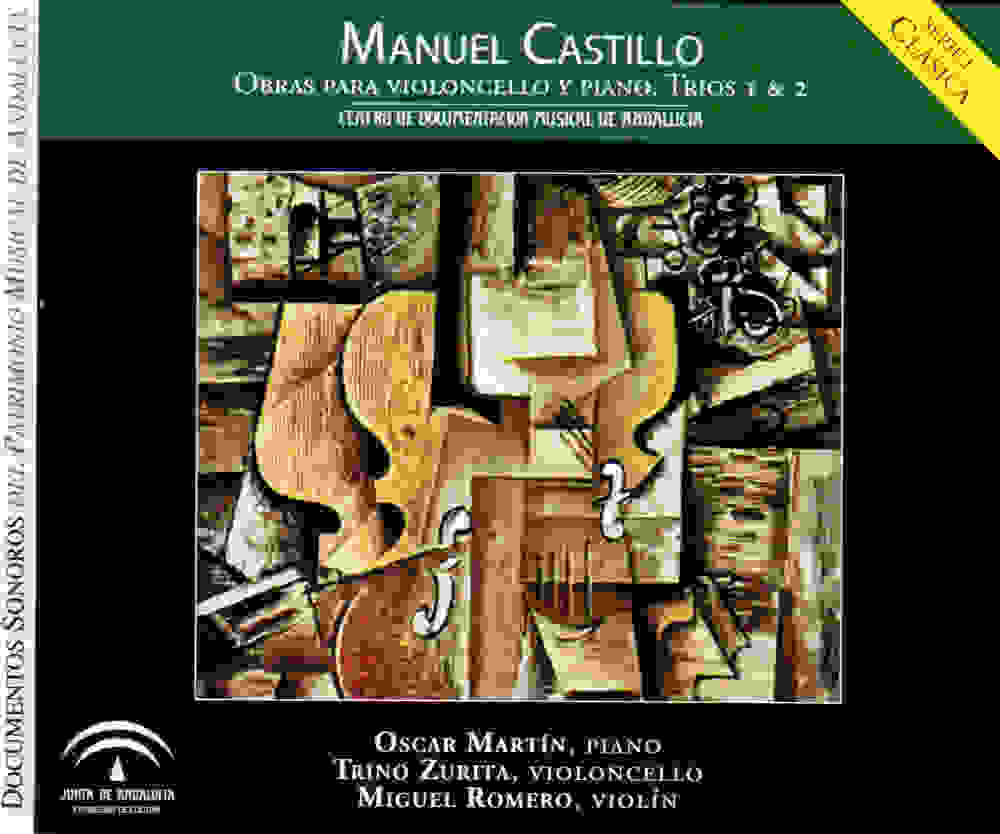
Almaviva
Almaviva aims to highlight the workof such illustrious Andalusians as Manuel de Falla and Joaquín Turina.
Edited
Junta de Andalucía. Consejería de Cultura
Coordinated
Centro de Documentación Musical de Andalucía
Produced
Agencia Andaluza de Instituciones Culturales
+ More
New in Almaviva
See the latest Almaviva.
Go to News
Buy our records
Shop in Almaviva all disks of our artists.
Simply access the Online Purchase section and select the disks you want.
In short time you will receive in your home.
Go to online Shopping


